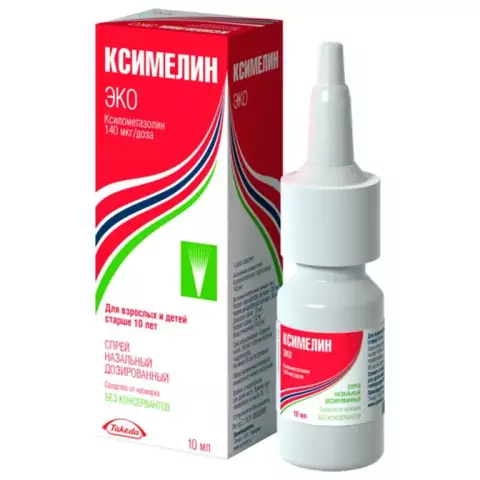- Author Rachel Wainwright [email protected].
- Public 2023-12-15 07:39.
- Last modified 2025-11-02 20:14.
Kandibene
Instructions for use:
- 1. Composition and form of release
- 2. Pharmacological action
- 3. Indications for use
- 4. Contraindications to use
- 5. Application during pregnancy and lactation
- 6. Method of administration and dosage
- 7. Side effects
- 8. Overdose
- 9. Interaction with other medicinal products
- 10. Special instructions for use

Kandibene is a pharmacological drug from the group of antifungal agents.
Composition and form of release
The active ingredient is clotrimazole.
Kandibene is available in the form of a cream, vaginal suppositories and solution for external use.
Candibene cream contains clotrimazole and auxiliary components (benzyl alcohol, sorbitan monostearate, polysorbate, cetylstearic alcohol, cetyl palmitate, 2-octyldodecanol, water). The cream is available in tubes of 30 g, it is almost white, homogeneous, odorless.
Candibene vaginal suppositories contain 100 or 200 mg of clotrimazole and auxiliary components (corn starch, lactose monohydrate, adipic acid powder, sodium bicarbonate, magnesium stearate, colloidal silicon dioxide, polysorbate). Candles are available in 3 pieces. in a blister. The package contains 1 or 2 blisters with the drug, complete with an applicator.
Solution for external use Kandibene contains 1 g of clotrimazole in 100 g of solution. In addition to clotrimazole, the preparation contains auxiliary substances (benzyl alcohol, propylene glycol, polyethylene glycol). The solution for external use is available in 40 ml dark glass bottles.
Pharmacological action Kandibene
This drug has a broad spectrum of antifungal activity. Clotrimazole disrupts the synthesis of a substance that is part of the cell membrane of fungi. As a result of exposure to the drug, lysis of fungal cells occurs.
In small doses Kandibene has a fungistatic effect, in large doses it has a fungicidal effect. According to the instructions, Kandibene acts on dermatophytes, yeast-like and mold fungi, and on pathogens of varicolored lichen and erythrasma. This drug has an antimicrobial effect against staphylococci, streptococci, and gram-negative bacteria (bacteroids, gardenrella).
Kandibene is poorly absorbed through the skin and mucous membranes and has no systemic effect. When used externally, the concentration of the drug is higher in the epidermis than in the deep layers of the skin and subcutaneous tissue. However, the concentration that is created in the deep layers of the skin is sufficient to suppress the growth of dermatophytes.
Indications for use
According to the instructions, Kandibene is recommended for use in case of fungal diseases of the skin, mycoses of the feet and skin folds, erythrasma, pityriasis versicolor, candidiasis (caused by dermatophytes, molds and yeasts), with mycoses complicated by secondary pyoderma. Also, this drug is indicated for vulvovaginal candidiasis, trichomoniasis, with genital superinfections and for sanitation of the genital tract before childbirth.
Contraindications to the use of Kandibene
- hypersensitivity to the constituent components of the drug;
- first trimester of pregnancy.
Caution should be exercised when using this medication while breastfeeding.
Application during pregnancy and lactation
The ongoing clinical studies have not established the fact of a negative impact on the fetus during pregnancy and on the health of the woman herself. However, the question of the possibility of prescribing Kandibene should be decided individually by the doctor.
During lactation, it was found that the drug does not penetrate into breast milk. But the use of the drug externally on the mammary glands during breastfeeding is contraindicated.
Method of administration of Kandibene and doses

This drug in the form of a cream and solution is used externally. The cream is applied in a thin layer to dry and cleansed areas of the affected skin, and rubbed in with light movements.
Kandibene cream is applied 2-3 times a day. The duration of treatment depends on the severity of the disease, the localization of the pathological process and the sensitivity to the treatment. With dermatomycosis, the course of treatment should be at least 4 weeks, with pityriasis versicolor - up to 3 weeks.
Treatment of fungal diseases of the skin of the legs should be carried out for another 2 weeks after the symptoms of the disease are eliminated.
Candibene vaginal suppositories should be inserted deep into the vagina in the evening before bedtime. The course of treatment is 6 days (with 100 mg suppositories) or 3 days (200 mg suppositories).
In order to sanitize the birth canal, Candibene should be used in the form of vaginal suppositories once.
Side effect
When using Candibene, local reactions are possible in the form of itching, burning, tingling. When applying the cream, erythema, blisters, irritation, peeling, edema may appear. Allergic reactions (urticaria, itching) are also possible. According to reviews, Kandibene rarely causes side effects and is well tolerated by patients.
Overdose of Kandibene
According to reviews, Kandibene does not cause any negative reactions and conditions when used in high dosages.
Interaction with other medicinal products
With the simultaneous use of nystatin, natamycin and amphotericin, a decrease in the effectiveness of Candibene is noted.
Special instructions for the use of Kandibene
According to the instructions, Kandibene should not be applied to the skin around the eyes, if the drug gets into the eyes, rinse them abundantly with running water.
When treating onychomycosis, it should be borne in mind that the treated nail plates must have a rough surface for better drug penetration. According to Kandibene reviews, in these cases it is best to use it in the form of a solution.
In patients with symptoms of hepatic failure during treatment with Kanibene, the condition of the liver should be periodically monitored.
If there is no effect of the treatment carried out within 4 weeks, the diagnosis should be re-confirmed.
If symptoms of hypersensitivity or irritation appear, Candibene should be discontinued.
Information about the drug is generalized, provided for informational purposes only and does not replace the official instructions. Self-medication is hazardous to health!






